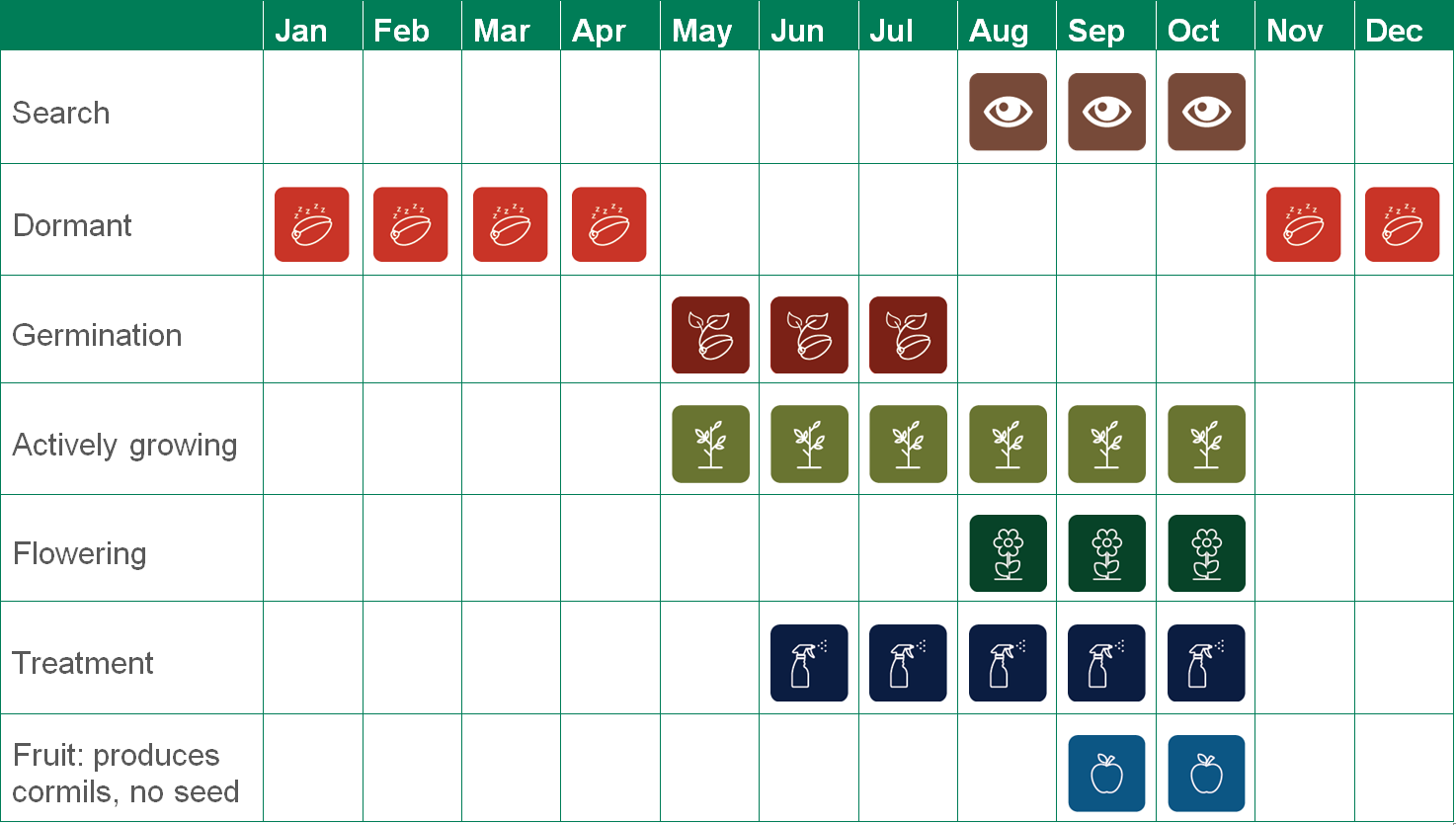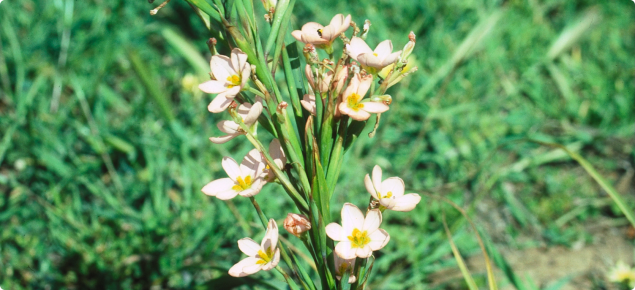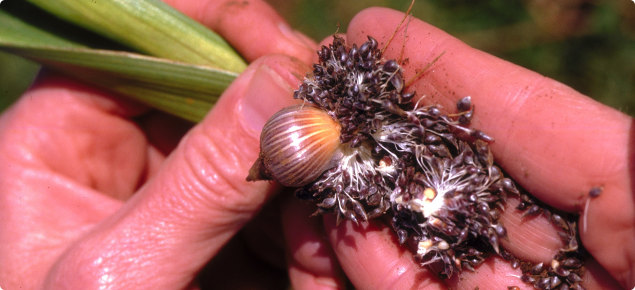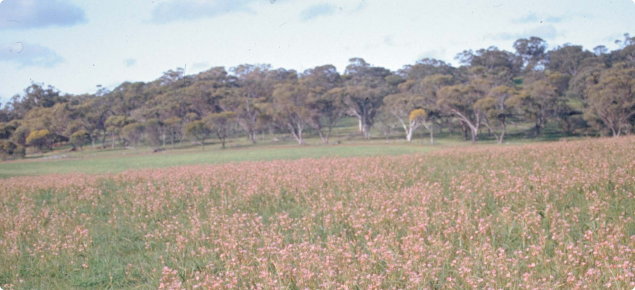Form: herbaceous — perennial
Status: present in WA
Two-leaf Cape tulip (Moraea miniata previously Homeria miniata) is native to South Africa. It can be confused with one-leaf Cape tulip (Moraea flaccida), which produces seeds and has a single basal leaf. The two species can be distinguished by the covering (tunic) around the corm at the base of the plant.
Appearance
Two-leaf Cape tulip is a perennial herb to 60 centimetres high,
Leaves: two or three leaves, folded, ribbed, linear, to 80 centimetres long.
Flowers: pink–salmon coloured flowers with a green dotted yellow centre on branched stems. Flowers with six petals, segments 1.3–2.5 centimetres long, not joined together. Flowers late winter and spring when two or three years old. Does not produce seeds, but does form a capsule to 1.5 centimetres long, which splits from the tips into three parts.
Corms: corms 1–2.5 centimetres wide, developing new corms each year. Plants produce clusters of cormils in the swollen leaf axils and many small corms (cormils) around the parent corm. Grows from corms and cormils in autumn. The corm and cormils have a hard black covering (tunic).
Spread by movement of corms and cormils caught in farm machinery and in agricultural produce. Poisonous to stock, but generally avoided by them. Cormil production may exceed many thousands per square metre, and may remain viable in the soil for many years. Less common than one-leaf cape tulip; the two species may grow together.
Online weed identification training
Login or set up a new account on DPIRDs online training site to access:
- a training course on how to identify Cape tulip and report it.
- training material that you can use to teach community groups how to identify Cape tulip.
Agricultural and economic impact
Cape tulip is extremely toxic. Cattle are most commonly affected. Symptoms of poisoning include: loss of appetite, abdominal pain, stiffness of the hind legs, diarrhea, general depression, and weakness that may advance to convulsions or paralysis. Sheep are rarely affected but are susceptible. About one kilogram of fresh leaf is enough to cause death overnight. Dry cape tulip remains toxic in hay. There is no readily available treatment for poisoning.
Declared pest category
The Western Australian Organism List (WAOL) contains information on the area(s) in which this pest is declared and the control and keeping categories to which it has been assigned in Western Australia (WA). Serach for two-leaf Cape tulip in gth eWAOL using the scientific name Moraea miniata
Requirements for land owners/occupiers and other persons
Requirements for land owners/occupiers and other persons if this pest is found can be sourced through the declared plant requirements link.
Search > detect > report
| MyPestGuide™ Reporter | Pest and Disease Information Service (PaDIS) |
Detectability: easy to find. Two-leaf Cape tulip is distinctive when flowering, but can be confused with one-leaf Cape tulip. Two-leaf Cape tulip has orange to salmon-pink flowers with a yellow or greenish centre. The flowers have six petals up to 2.5 centimetres long. Plants have two or three leaves, up to 80 centimetres long. Two-leaf Cape tulip corms (bulbs) are up to 2.5 centimetres across and have a hard black covering (tunic). It does not produce seeds but produces many small corms (cormils) in the leaf axils.
Who is likely to find it: potentially any landholder in the South West Land Division. It is common in the Swan and Avon Valleys, and extends to the eastern wheatbelt and Goldfields.
When to find it: most likely to be found in late winter and spring, when it is flowering.
Where to find it: can be found in pastures and remnant bushland and on roadsides.
Control method
Control methods for this declared plant can be found through the two-leaf Cape tulip control link.
Management calendar
Further details
Further details on this declared plant can be found in the link Cape tulip: what you should know.




